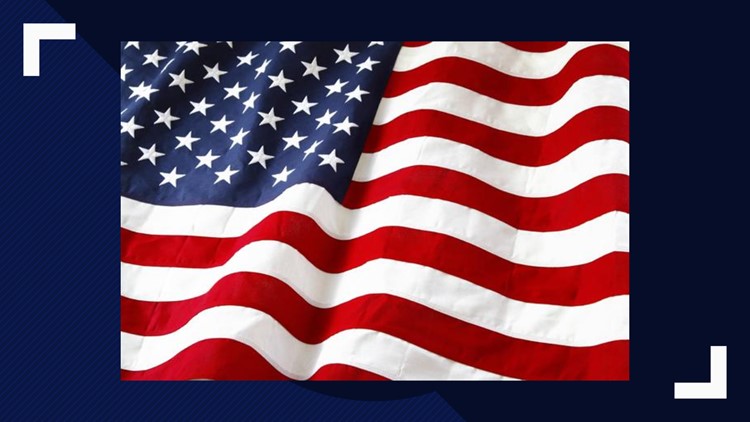MIDLAND, Texas — "That the flag of the United States shall be of thirteen stripes of alternate red and white, with a union of thirteen stars of white in a blue field, representing the new constellation..." This was the resolution adopted by the Continental Congress on June 14, 1777. The resolution was made following the report of a special committee which had been assigned to suggest the flag’s design.
A flag of this design was first carried into battle on September 11, 1777, in the Battle of the Brandywine. The American flag was first saluted by foreign naval vessels on February 14, 1778, when the Ranger, bearing the Stars and Stripes and under the command of Captain Paul Jones, arrived in a French port. The flag first flew over a foreign territory in early 1778 at Nassau, Bahama Islands, where Americans captured a British fort. Observance of the adoption of the flag was not soon in coming, however.
Although there are many claims to the first official observance of Flag Day, all but one took place more than an entire century after the flag’s adoption in 1777.
The first claim was from a Hartford, Conn., celebration during the first summer of 1861. In the late 1800s, schools all over the United States held Flag Day programs to contribute to the Americanization of immigrant children, and the observance caught on with individual communities.
The most recognized claim, however, comes from New York. On June 14, 1889, Professor George Bolch, principal of a free kindergarten for the poor of New York City, had his school hold patriotic ceremonies to observe the anniversary of the Flag Day resolution. This initiative attracted attention from the State Department of Education, which arranged to have the day observed in all public schools thereafter.
In more modern times its was both President Wilson, in 1916, and President Coolidge, in 1927, that issued proclamations asking for June 14 to be observed as the National Flag Day. But it wasn’t until August 3, 1949, that Congress approved the national observance, and President Harry Truman signed it into law.
Fast Flag Facts:
1. Pennsylvania is the only state that observes Flag Day as a state holiday.
2. The flag has been changed 27 times. The final star, for Hawaii, was added in 1960.
3. The flag is normally flown from sunrise to sunset.
4. The flag should not be flown at night without a light on it.
5. The first time the flag was flown after being adopted was on Aug. 3, 1777 in Rome, New York.
6. The designer of the American flag was Francis Hopkinson, a signer of the the Declaration of Independence as a delegate from New Jersey.
7. Betsy Ross sewed the first American flag.
8. There are six American flags on the moon. Five are standing, but Neil Armstrong’s fell over.
9. The flag should not be flown in the rain or inclement weather.
10. After a tragedy or death, the flag is flown at half staff for 30 days. It’s called “half staff” on land ,and “half mast” on a ship.
11. When your flag is old and has seen better days, it is time to retire it. Old flags should be burned or buried.
12. The Flag Code bans the use of the flag as clothing. That’s right, not USA T-Shirts, bandanas or bikinis.
13. If you like to study flags, then you are a Vexillologist!
14. The colors of the flag have meaning. Red stands for hardiness and valor. White symbolizes purity and innocence. Blue represents vigilance, perseverance and justice.
15. An American flag should never touch the floor or the ground.
16. When displayed on a wall or window the blue field should be in the upper left corner.
17. The military folds the flag with 13 folds, each with symbolic meaning.
18. 50 flags fly 24 hours a day around the Washington monument.
19. 95% of U.S. flags are made in the U.S.A.
20. The U.S. flag always flies at the top of a staff above any other flag.



